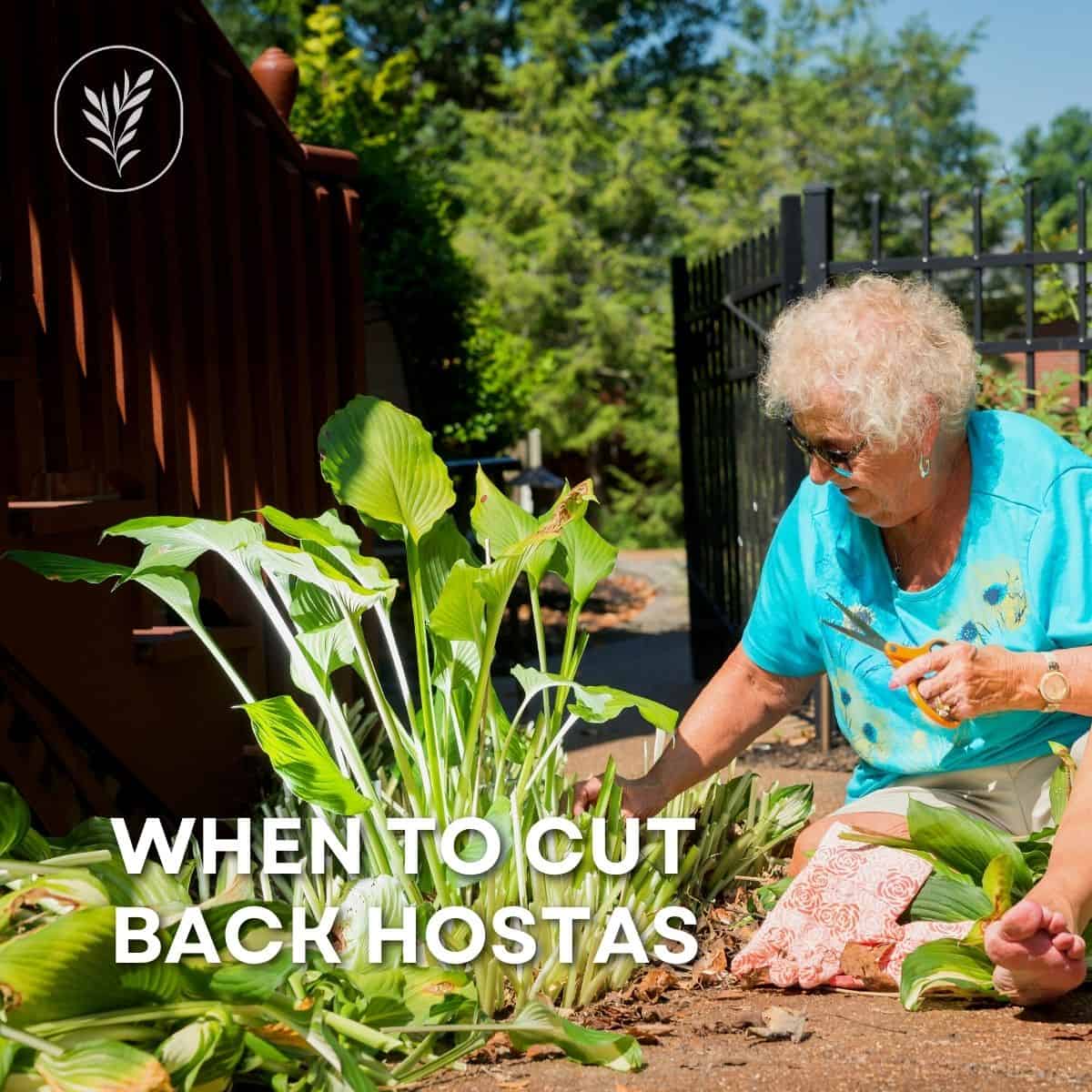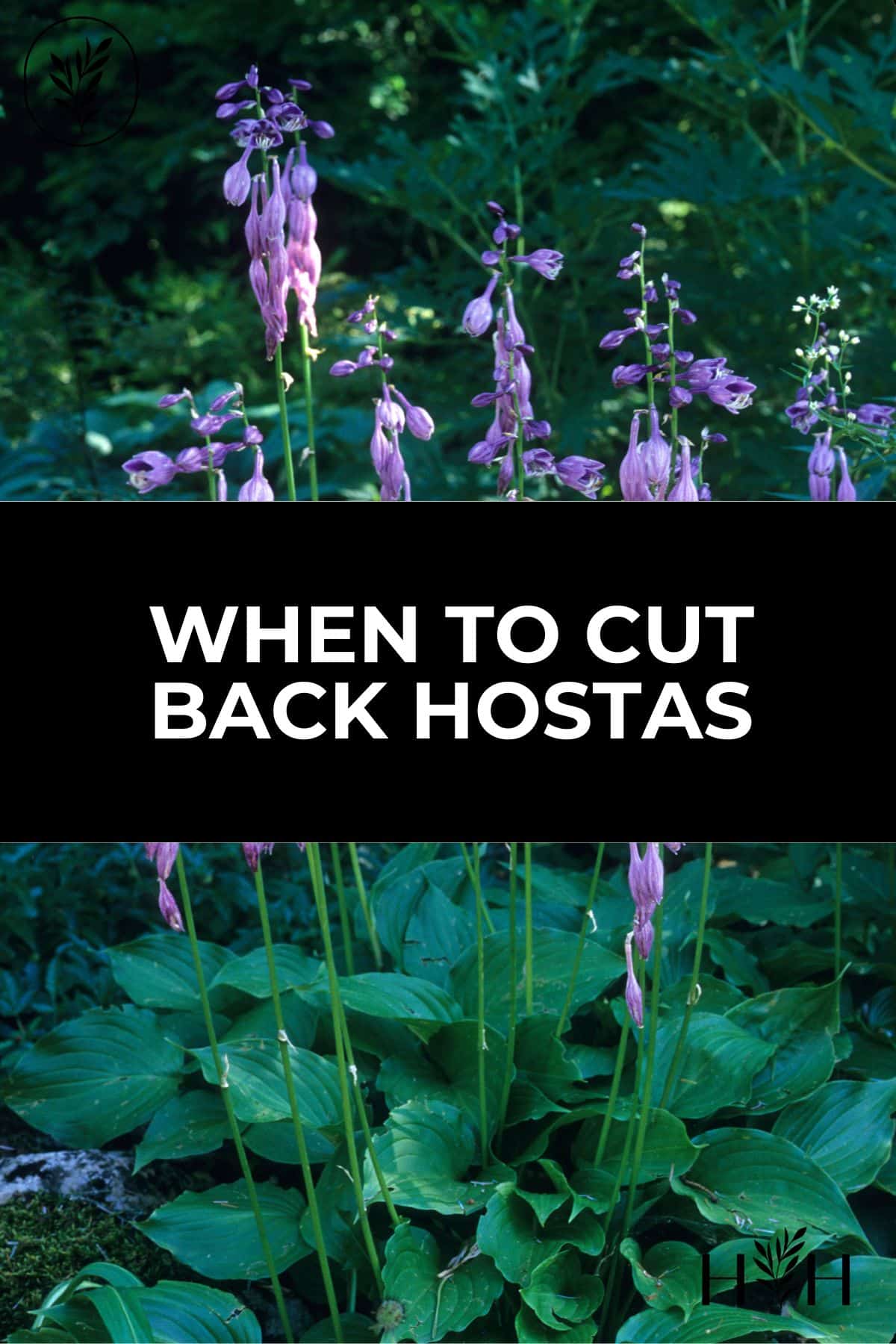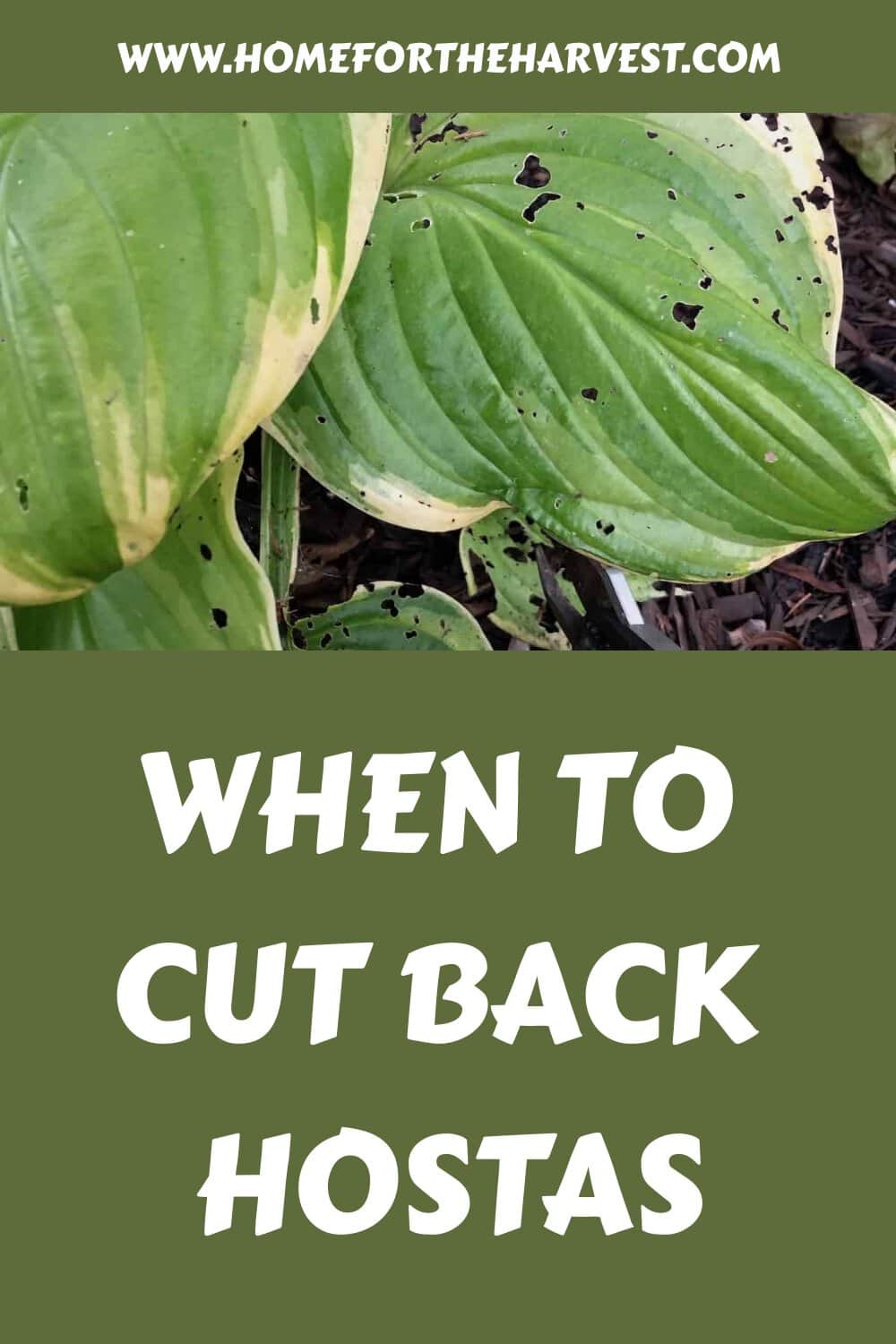Hostas should be cut back in late fall. Healthy hosta leaves can be left on the plant in early fall to capture much-needed energy, but all dead leaves should be trimmed off after the first hard frost to deter slugs and other pests from making your hosta their winter home. You can also just cut off leaves if they look old and tired! Just try to have the leaves removed before snowfall.
When to cut back hostas for winter
Cut back hosta plants each year in late fall. In years with an early first frost, the leaves go brown quickly and die back to the ground in October. Hosta leaves don’t survive frost well. When the first frost arrives quickly, all the spent plant material above the ground can be removed at once.
In years with a late start to winter, I sometimes remove hosta leaves while they’re still upright and green. By October, my hosta leaves had generally been attacked by the odd pest and had become damaged. I thought it was just my hostas for a few years, but now I’ve noticed that hostas in many different gardens seem to be a treat for pests! Once the frost has hit them, it’s time to think about winterizing them.
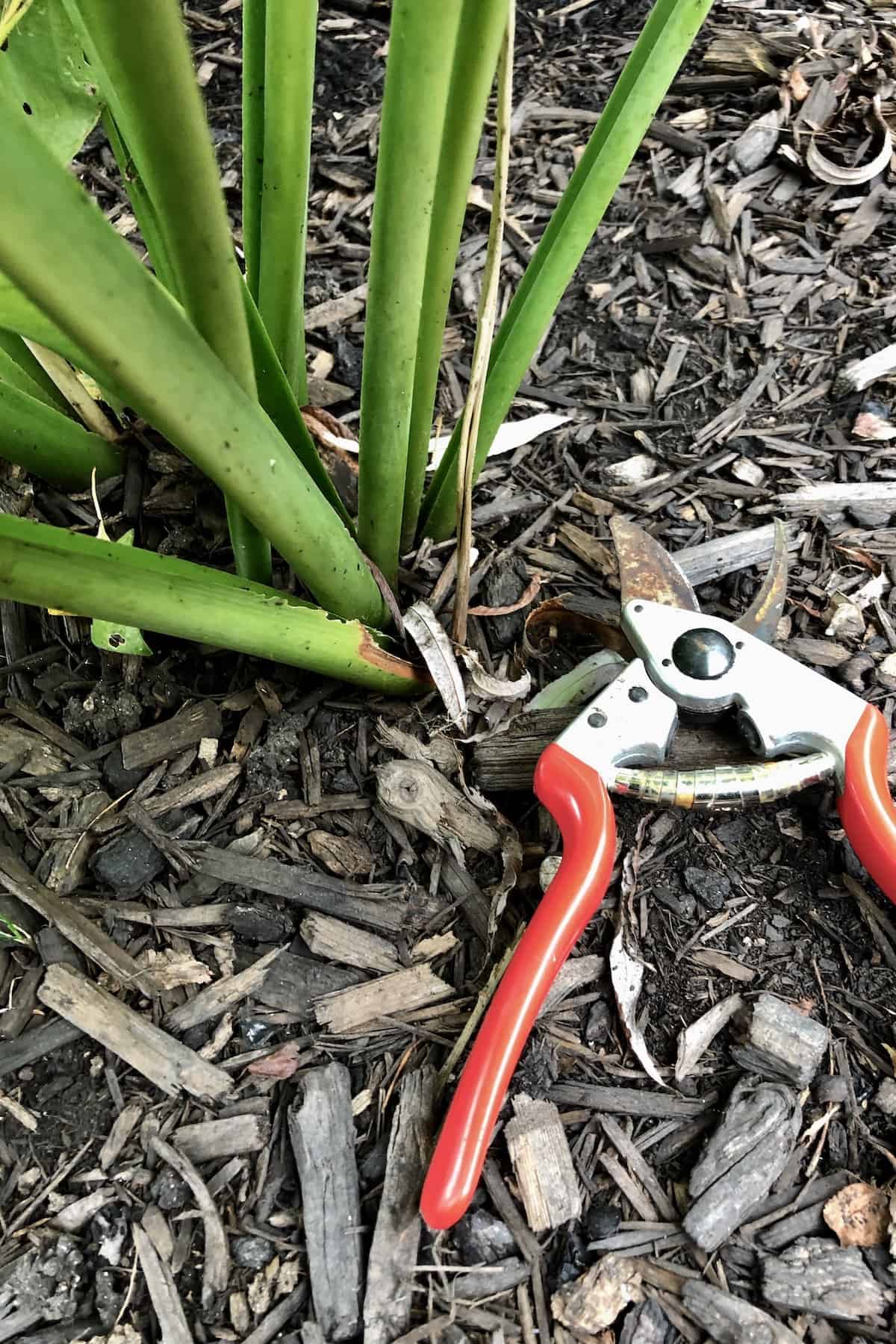
I like to remove any dead, damaged, or diseased foliage as soon as possible, and hostas are no exception. Pest-damaged or diseased leaves should be removed and discarded as soon as possible. Hosta leaves can also be damaged by harsh weather like wind or hail. The plant can channel its energy into the healthy parts of the plant once the damaged leaves are gone.
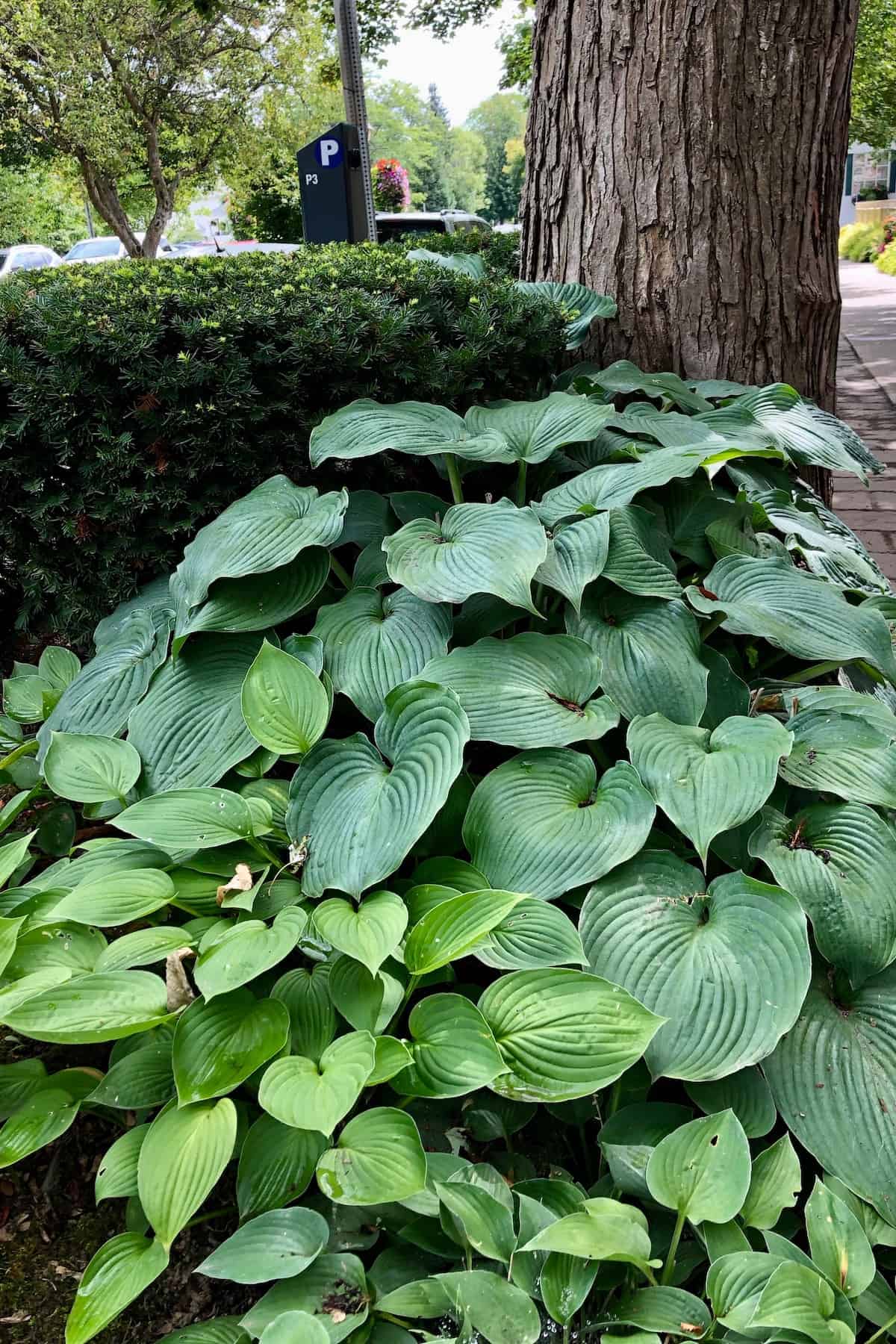
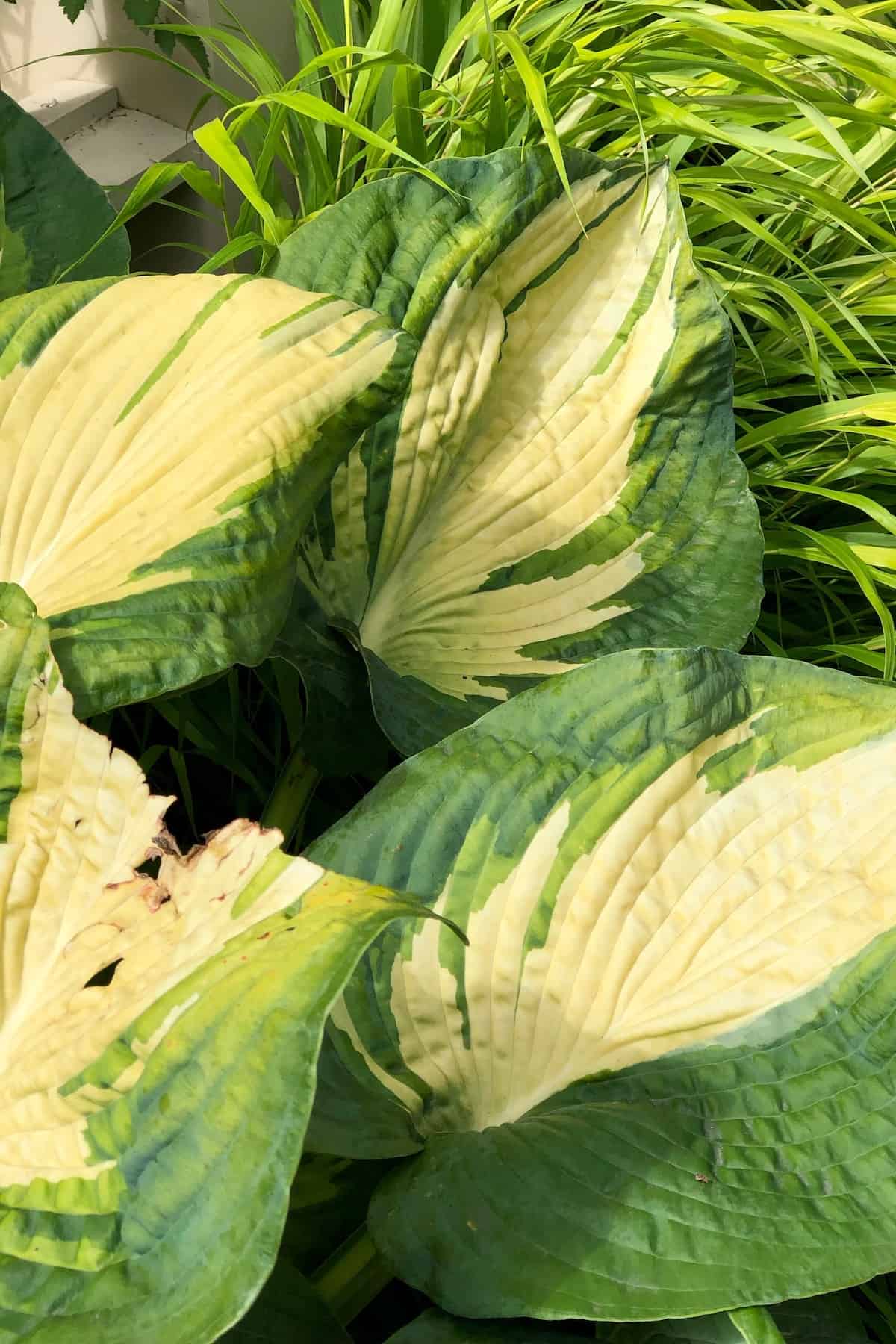
Why cut back hostas in the fall (instead of waiting until spring)
Pruning off dead, damaged, or diseased foliage can happen any time of year. While it’s nice to leave some foliage over winter for beneficial insect habitat, I’ve found hostas are not the right candidate for overwintering. The wet foliage is simply too attractive as a shelter for common garden pests.
Hosta plants are particularly susceptible to damage from slugs and snails, which love their big shady leaves. I think hostas must be a delicacy for slugs! Removing any less-than-healthy foliage makes the hosta plants less attractive to slugs (and more attractive to look at in your garden).
Hosta leaves turn yellow in the fall and fade to brown as the plants enter winter dormancy. The roots of the plant are still healthy and happy below ground, but the hosta won’t have any leaves until next spring.
Start pruning hosta plants as the foliage fades. Trim all the leaves back to the ground and remove them. That helps things look neat in the garden and keeps bugs from overwintering snugly in the dead leaves.
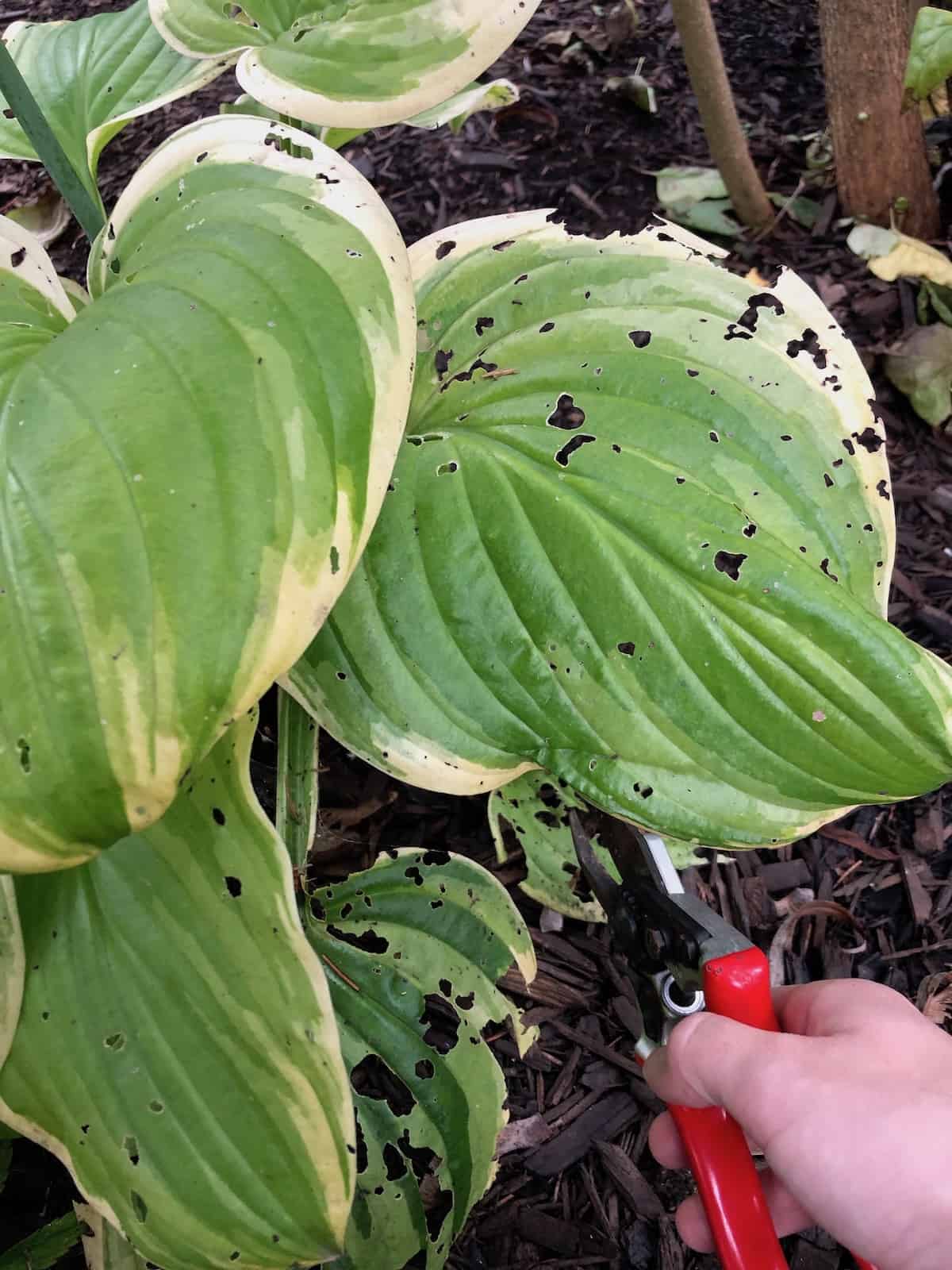
How to trim hostas in late fall or early winter
So how do you trim hostas for winter? Gather the leaves up together with a gloved hand so that the leaf stems are visible. Cut each hosta leaf off at the bottom of the stem using a pair of pruning shears. Removing hosta leaves that have already been killed by frost is often easier. Leaves that are still standing take slightly more work to snip off.
Cutting back hostas is easiest with a pair of handheld pruning shears. I like to leave a few inches of stem above the soil on the plant when trimming off hosta leaves. The garden looks neat and tidy, AND I know where my plants are!
Other than pest habitat issues, the other reasons to prune hostas back to the ground before winter are mainly aesthetic. Dead hosta leaves aren’t the most attractive way to add winter interest to your garden. They get flattened on the ground and remain wilted for the entire winter. I’d prefer to leave pretty seed heads from other perennials up over the winter.
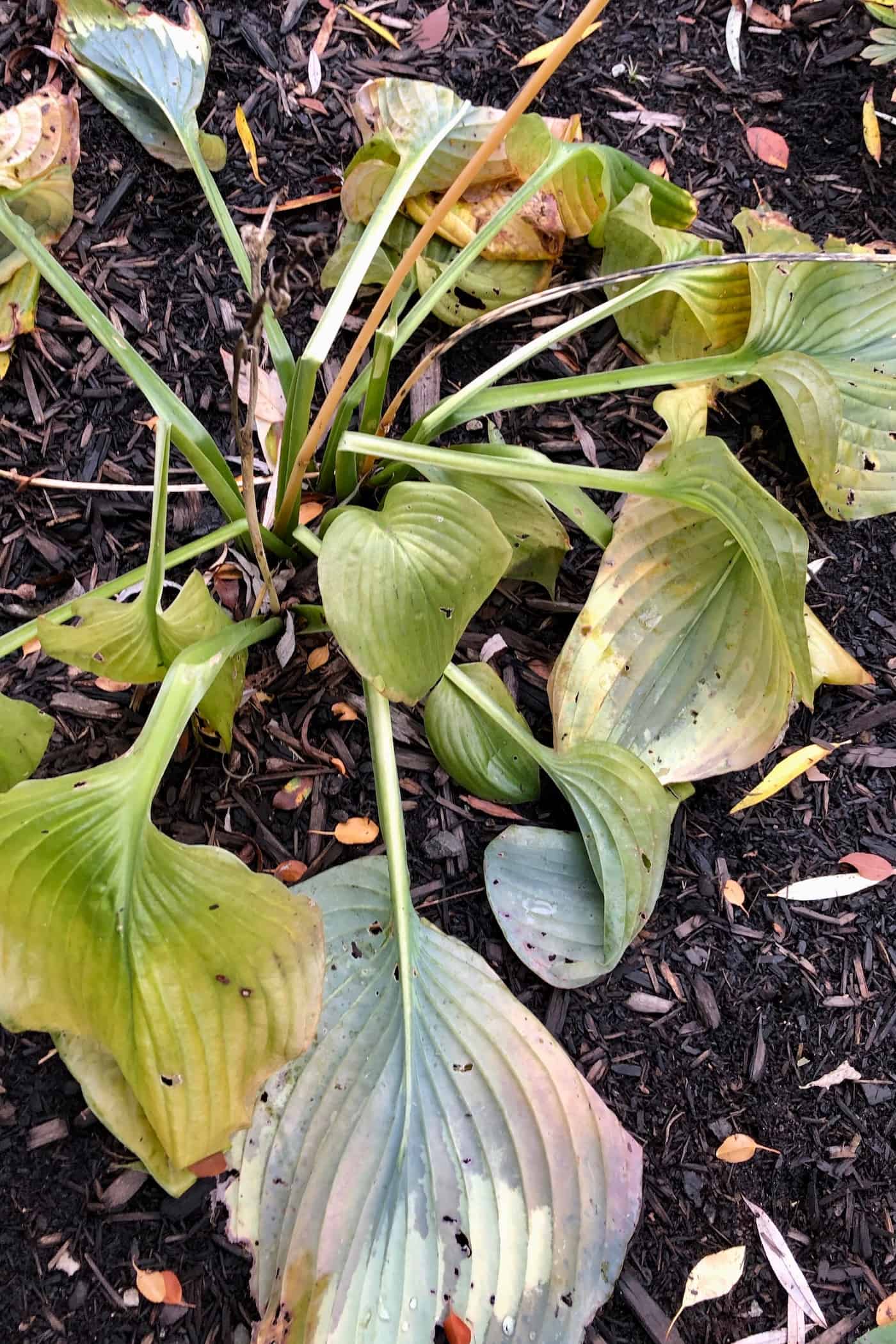
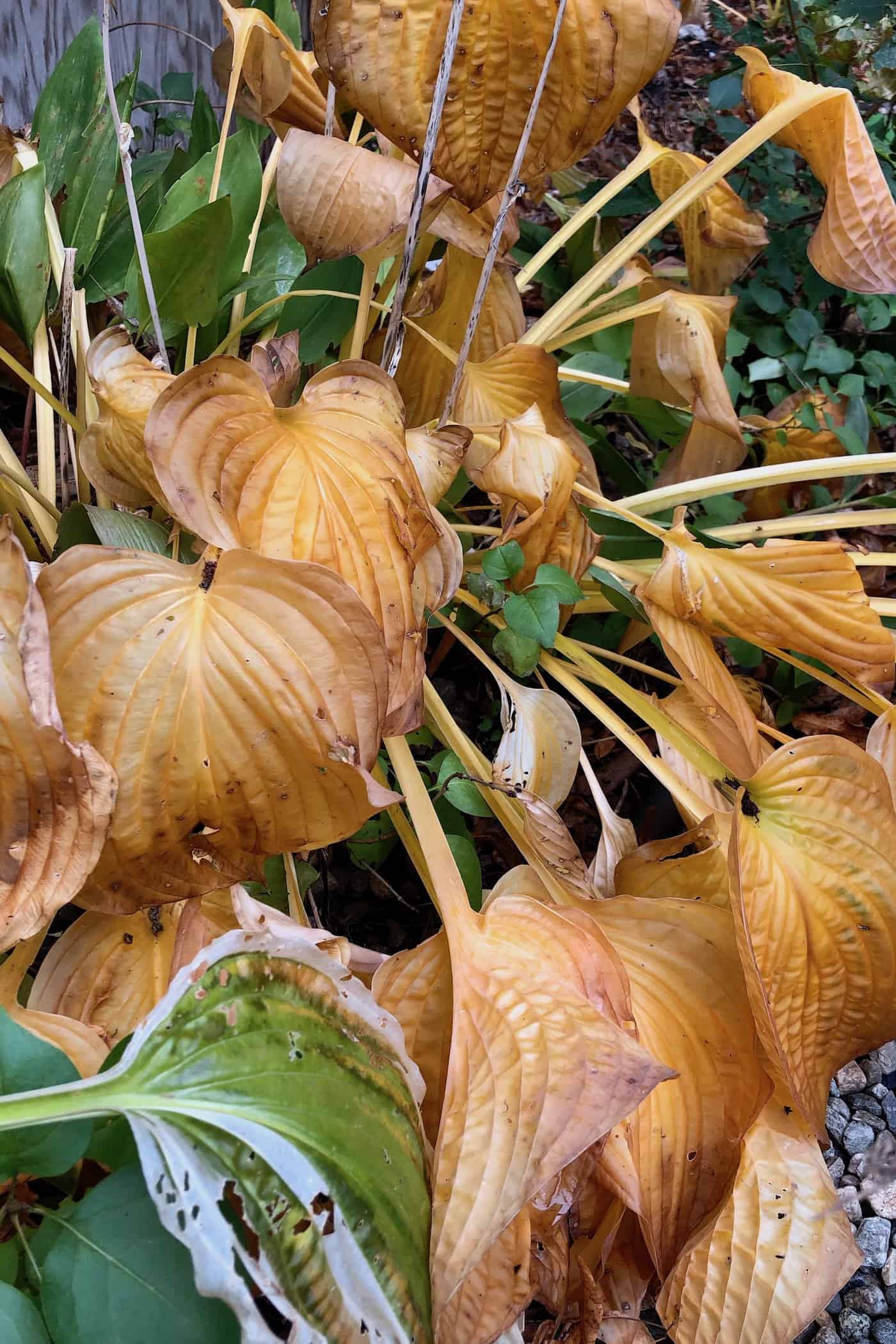
Winter is an important time for hostas, as they are dormant in this season. The cold temperatures let the hostas rest and prepare to grow fantastic foliage during the spring growing season.
If you choose to leave the hosta leaves on the plant over winter, removing the spent foliage in early spring is fine. Try to trim off the dead leaves before the new shoots appear to minimize damage to the baby hosta leaves. By this point, you can usually just gently pull each hosta leaf off the root base instead of using pruners to remove them.
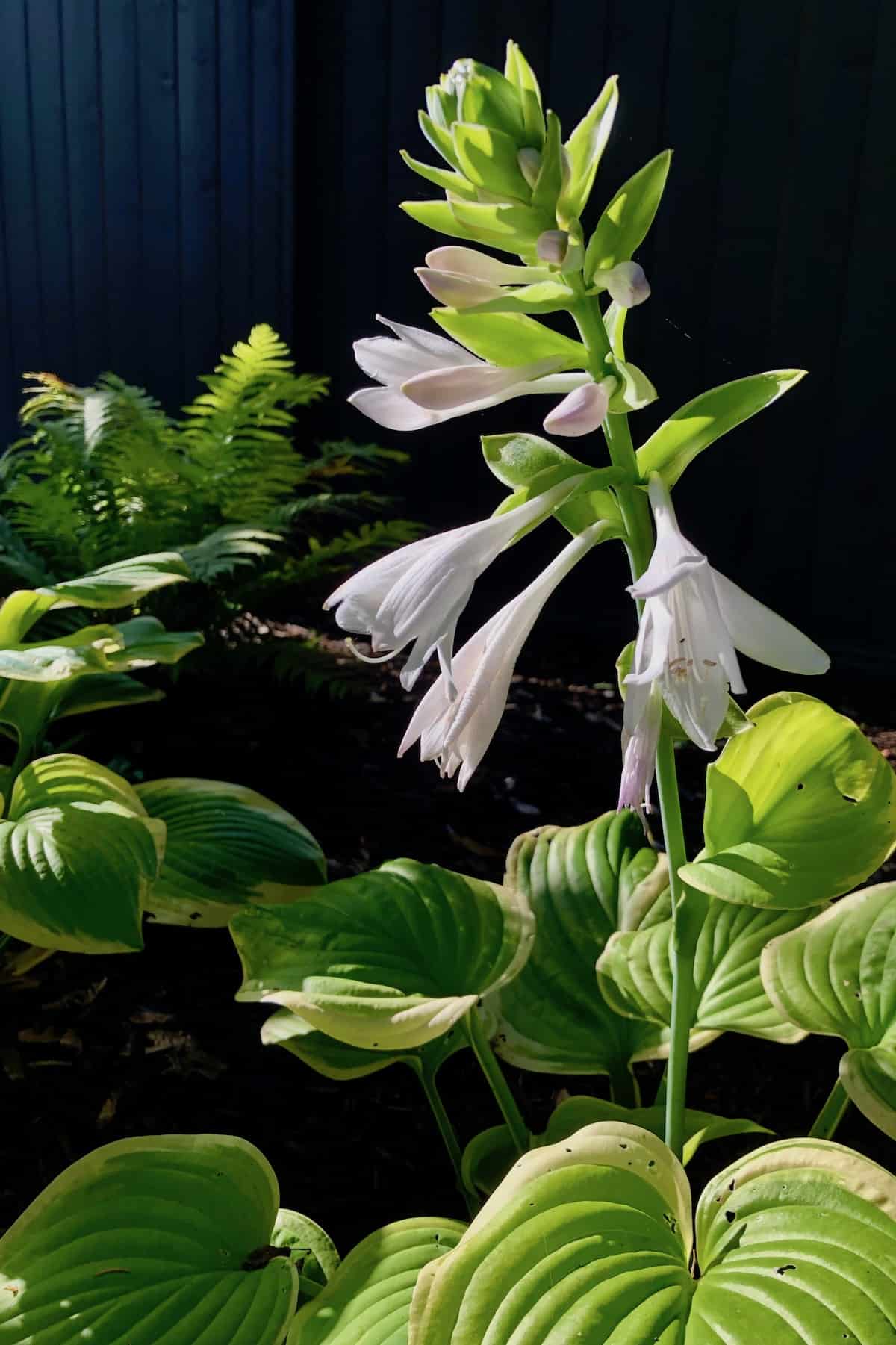
When to cut the flower stalks off hostas
What about the flowers? When should the blooms be removed from the hostas? Remove the flower stalks as soon as they appear if the hosta is only about pretty foliage. If you would like to enjoy the flowers, it’s also totally fine to let them bloom and fade on the plant. Flower stalks will die back to the ground in the fall with the foliage.
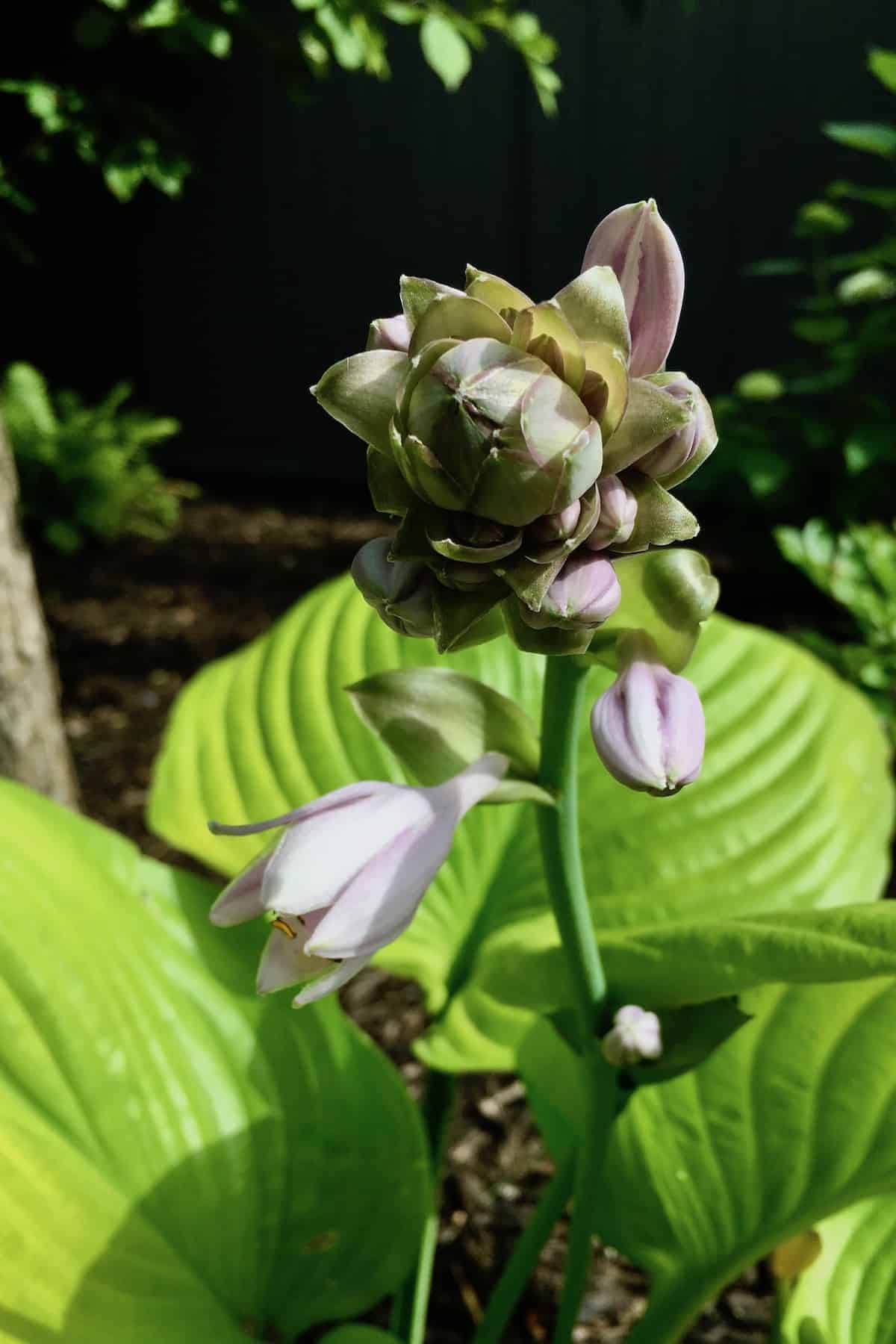
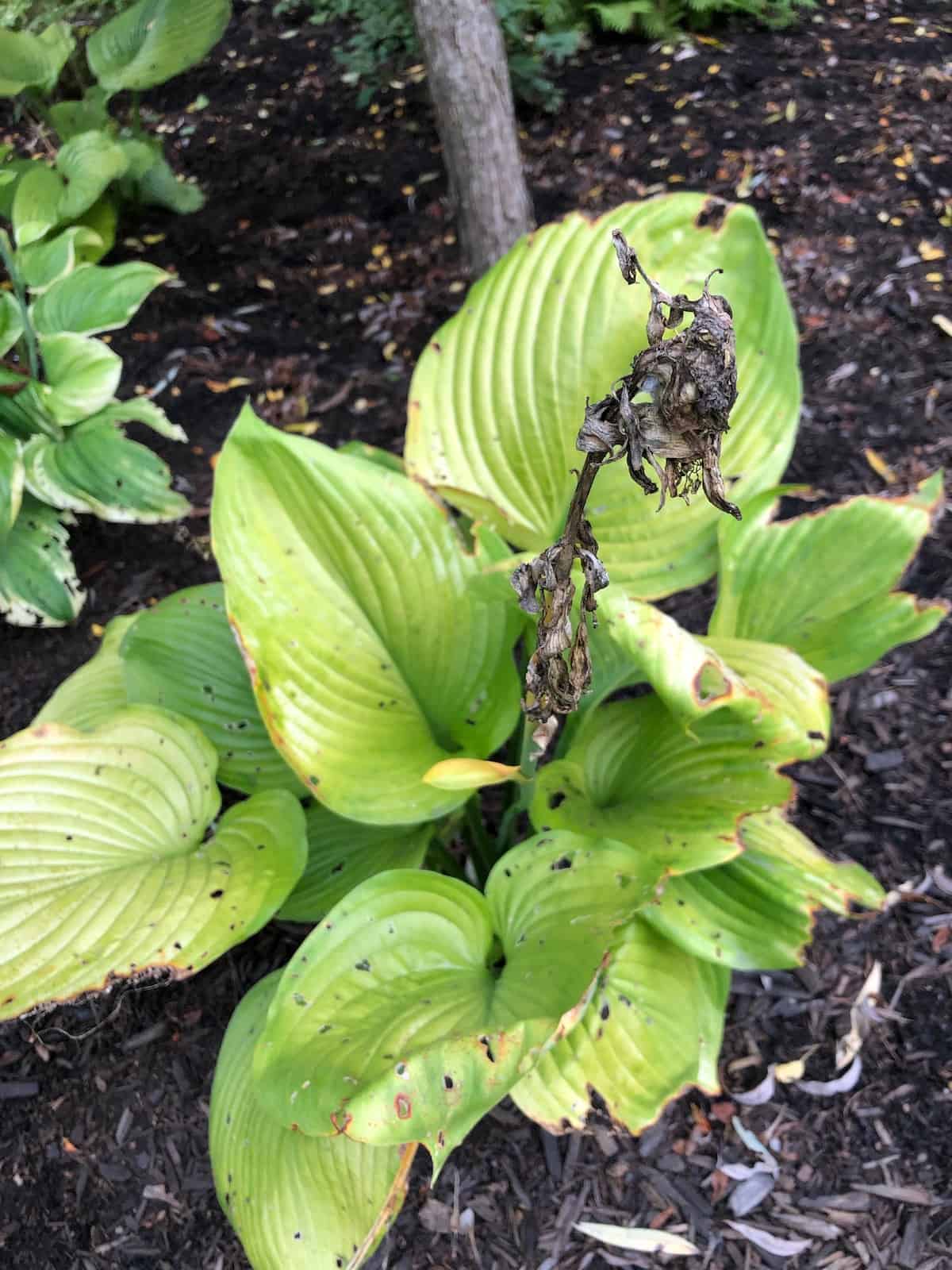
So when are wilted flowers removed from hosta plants? Spent flower blooms can be removed in the fall, along with other faded foliage. You may wish to leave the seed head on the plant for a while as a food source for birds. It’s not strictly necessary to rush and trim them off as soon as they wilt. Let them do their thing!
Remember that any energy the plant puts into growing flowers (and then seed heads) is energy that’s not going into the foliage and roots. I usually remove new flower shoots on new hosta plants to encourage healthy root establishment.
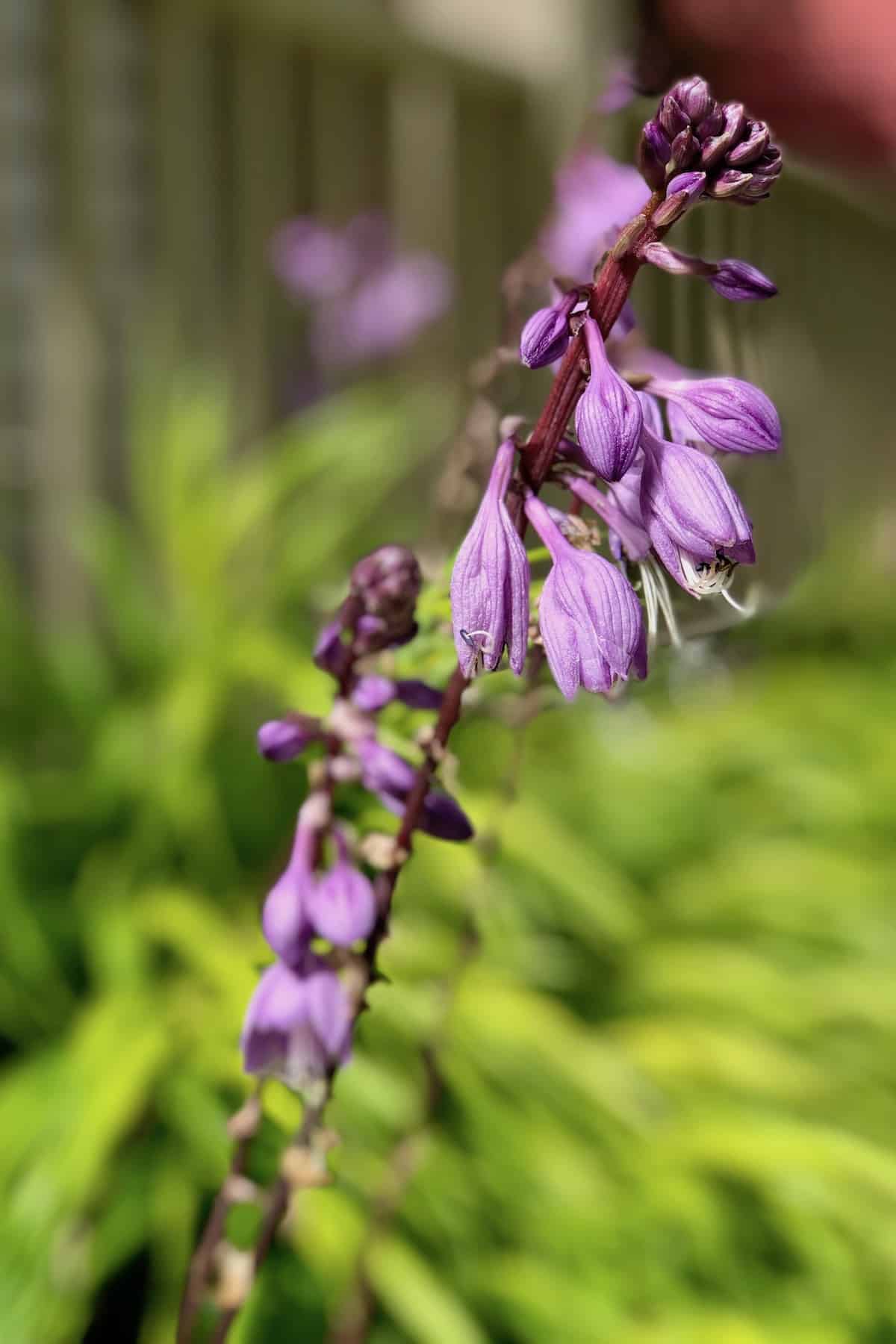
Hostas usually only put on one round of blooms, so flower removal only has to be done once a year. Like when pruning hosta leaves, remove the flower stems near the base. Pruning the stem low keeps the visual focus on the foliage.
More about fall hosta care and pre-winter clean-up
Fall hosta care is mainly about preventing cozy conditions for unwanted garden pests. Use clean tools to minimize opportunities for germs to spread. Remove dead or damaged foliage that could provide winter shelter for critters. Seed heads can be left for the birds or removed along with the foliage.
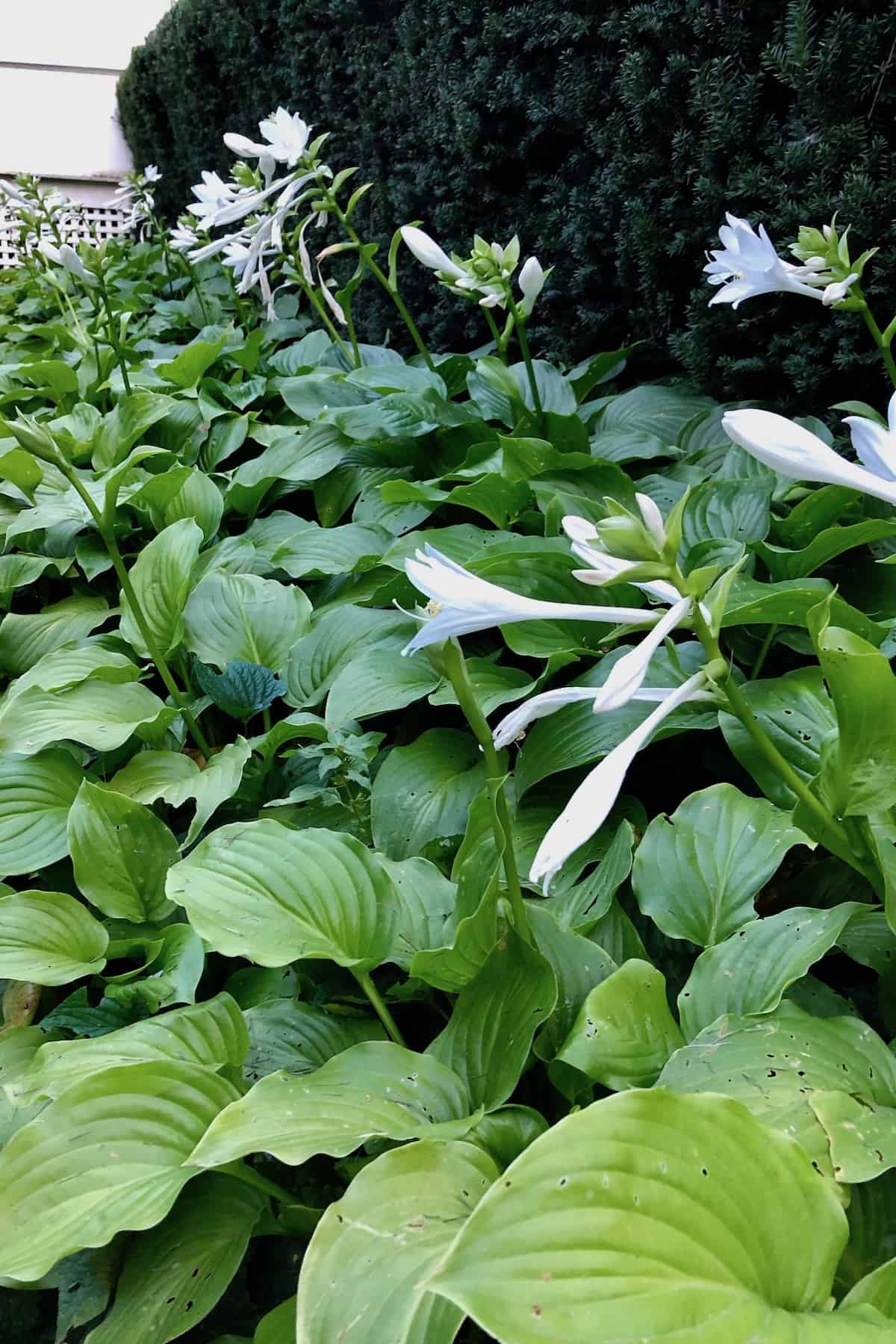
Overwintering hostas planted in containers
Hostas need a good cool winter of dormancy to thrive during the summer months. They do better in the ground during the winter than in container gardens. The ground temperature isn’t susceptible to the same extreme swings that container plants may experience. Like many plants, hostas don’t appreciate repeated freezing and thawing cycles.
If your hostas are already in the ground, keep them there. Any container-planted hostas can be planted out in the ground in early fall or otherwise protected from the temperature extremes of winter.
If your hosta needs a little extra care in the fall
A layer of shredded leaf mulch will provide a bit of cold-weather insulation if it’s really required. Any mulch touching (or nearly touching) the base of the hosta should be removed in early spring to avoid creating the same “wet blanket” mess that the broad hosta leaves would have left.



